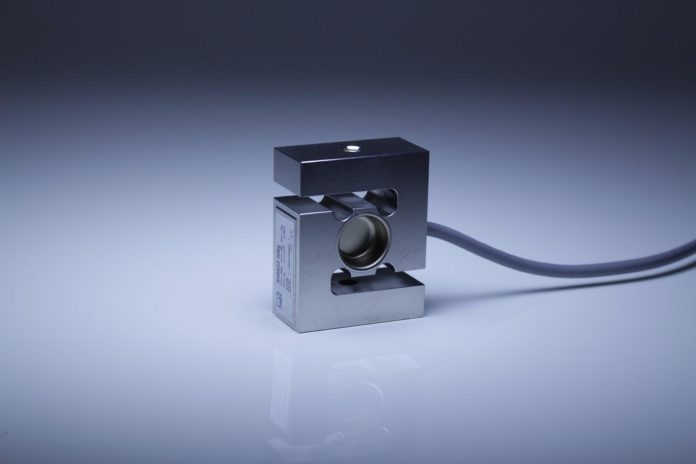What is a load cell?
It is a force transducer that senses the force of the gravitational pull when you put an item on the load cell. It converts the tension, compression, pressure, or torque it receives into electrical signals which provide a standardised measurement reading.
Load Cell Types
- Hydraulic Load Cell
This type of load cell involves the interaction of a pressure gauge and fluid, typically in the form of oil. When an item is placed on the platform, the force exerted against the fluid is converted into a measurement. Hydraulic load cells are generally used for hopper, bin and tank weighing.
- Single Point Load Cell
One of the most versatile types of transducers is the single point load cell. It provides a highly accurate reading, even if you place the item off-centre of the platform. They are generally used for food, medicine and scientific studies.
- Rope Tension Load Cell
The most popular load cell option for elevators, hoists and winches is the rope tension load cell. It yields measurements based on the tension it receives from the rope attached to it.
- Donut Load Cell
Sometimes referred to as the “thru-hole load cell,” the donut load cell is a compact transducer that has a hole in its inner diameter where a rod passes through the sensor. This load cell is engineered to measure compressive loads such as bolt loading.
- Pneumatic Load Cell
Next on the list is the pneumatic load cell. This is generally used in environments where cleanliness and safety are of primary consideration. The air pressure in the system provides the converted measurement reading of the object being weighed.
- Miniature Load Cell
The miniature and subminiature load cells are heavy-duty compressed transducers that lodge test benches, industrial weighing routines and prototype installations. Generally, they consist of a twist-lock connector and cable link that aids in performing high capacity loads.
- Canister Load Cell
This is sometimes called “column load cell.” Canister load cells are compact but designed for heavier weight applications. They are typically used to weigh hoppers, cars and tanks.
- Digital Load Cell
If you are looking for a more dynamic approach to measuring, digital load cells are the way to go. These load cells are mainly used for check weighers, filling, packing, and sorting machines.
- Compression Load Cell
This type of load cell is known for its reliability, accuracy and durability which makes them perfect for the railway, silo and truck scales. Compression load cells convert the pushing force along a single axis into the object’s weight.
- In-Line Load Cell
Another reliable force transducer is the in-line load cell. This is typically used in both tension and compression loading applications, hence, best for endurance and press lodging.
- Shear Beam Load Cell
Shear beam load cells are usually mounted on a smooth flat surface to keep them in place and to ensure accuracy. They are known to withstand harsh agricultural environments and are corrosive-resistant.
- Strain Gauge Load Cell
The next type of transducer is the strain gauge load cell. The weight measurement is obtained from the converted electrical resistance resulting from the strain or stress it receives.
- Platform Load Cell
Transducers used in industrial food processing and automatic weighing stations are called platform load cells. The best thing about this type of load cell is it accommodates “off-centre” weight applications.
- S-Type Load Cell
If you need a transducer that can provide mechanical to electrical weight conversions, the S-type load cell is the best option for you. These load cells are best used for truck, tank and hopper scales. They are especially distinguished by their S-shaped beams.
- Ring Torsion Load Cell
RTN or ring torsion load cell involves a ring-like transducer that contracts as weight is added. This is a good option for scales that requires fast-shifting measurements.
- Disc Load Cell
Unlike other transducers, disc load cells probably have the most complicated design and composition. If you require a premium and accurate weight reading, you should consider this type of load cell.
- Capacitive Load Cell
Capacitance is the ability of a transducer to store a charge, which depends on the space between the plates. When an item is placed on these plates the space narrows down which yields a change in capacitance, hence, providing the weight of the item.
- Multi-Axis Load Cell
Another type of single load cell that many industries rely on is the multi-axis load cell. It is tailored to weigh a multitude of loads simultaneously.
- Chassis Load Cell
Next on this list is the chassis load cell. These types of transducers provide dependable and precise payload measurement. They are best applied to trucking and transporting applications.
- Load Button Load Cell
Generally, load button load cells are engineered with higher precision using a diaphragm construction. They are used in confined limited spaces and are best for medical applications.
- Pin Load Cell
Lastly, the pin load cells are compact transducers that use compression and tension to yield accurate and reliable measurements. They are typically applied to axles, hydraulic presses, and crane liftings.
By knowing these different types, you can choose the right load cell that best fits your needs.
Contact Meltrons Australia for the most reliable load cells near you!











